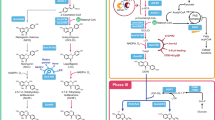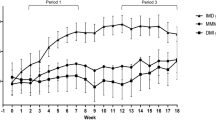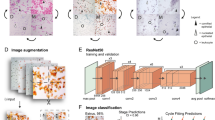Abstract
BIOCHANIN A (I), genistein (II) and formononetin (III) have been shown to act as oestrogens in mice, rats and guinea-pigs, and are considered to be responsible for the depression of fertility noted in sheep grazing subterranean clover1. An examination has now been made of the urinary metabolites produced when these isoflavones are administered to sheep. Nilsson2 reported that biochanin A, injected intraperitoneally into rats, was largely excreted in the faeces as biochanin A and genistein or their conjugates. In our experiments with sheep, only trace amounts of free or conjugated isoflavones were found in the faeces. 
This is a preview of subscription content, access via your institution
Access options
Subscribe to this journal
Receive 51 print issues and online access
$199.00 per year
only $3.90 per issue
Buy this article
- Purchase on SpringerLink
- Instant access to full article PDF
Prices may be subject to local taxes which are calculated during checkout
Similar content being viewed by others
References
Moule, G. R., Braden, A. W. H., and Lamond, D. R., Anim. Breed. Abst. (Commonwealth Agricultural Bureaux), 31, 139 (1963).
Nilsson, A., Acta Chemica Scand., 16, 31 (1962).
Cayen, M. N., Carter, A. L., and Common, R. H., Biochim. Biophys. Acta, 86, 56 (1964).
Nilsson, A., Arkiv Kemi, 17, 305 (1961).
Nilsson, A., Arkiv Kemi, 19, 549 (1962).
Biggers, J. D., and Curnow, D. H., Biochem. J., 58, 278 (1954).
Author information
Authors and Affiliations
Rights and permissions
About this article
Cite this article
BATTERHAM, T., HART, N., LAMBERTON, J. et al. Metabolism of Oestrogenic Isoflavones in Sheep. Nature 206, 509 (1965). https://doi.org/10.1038/206509a0
Issue date:
DOI: https://doi.org/10.1038/206509a0
This article is cited by
-
High serum S-equol content in red clover fed ewes: the classical endocrine disruptor is a single enantiomer
Environmental Chemistry Letters (2006)



